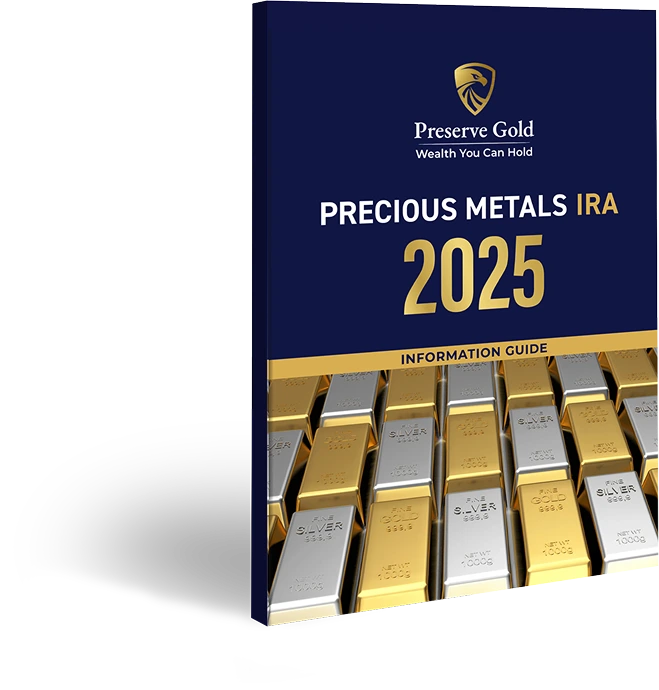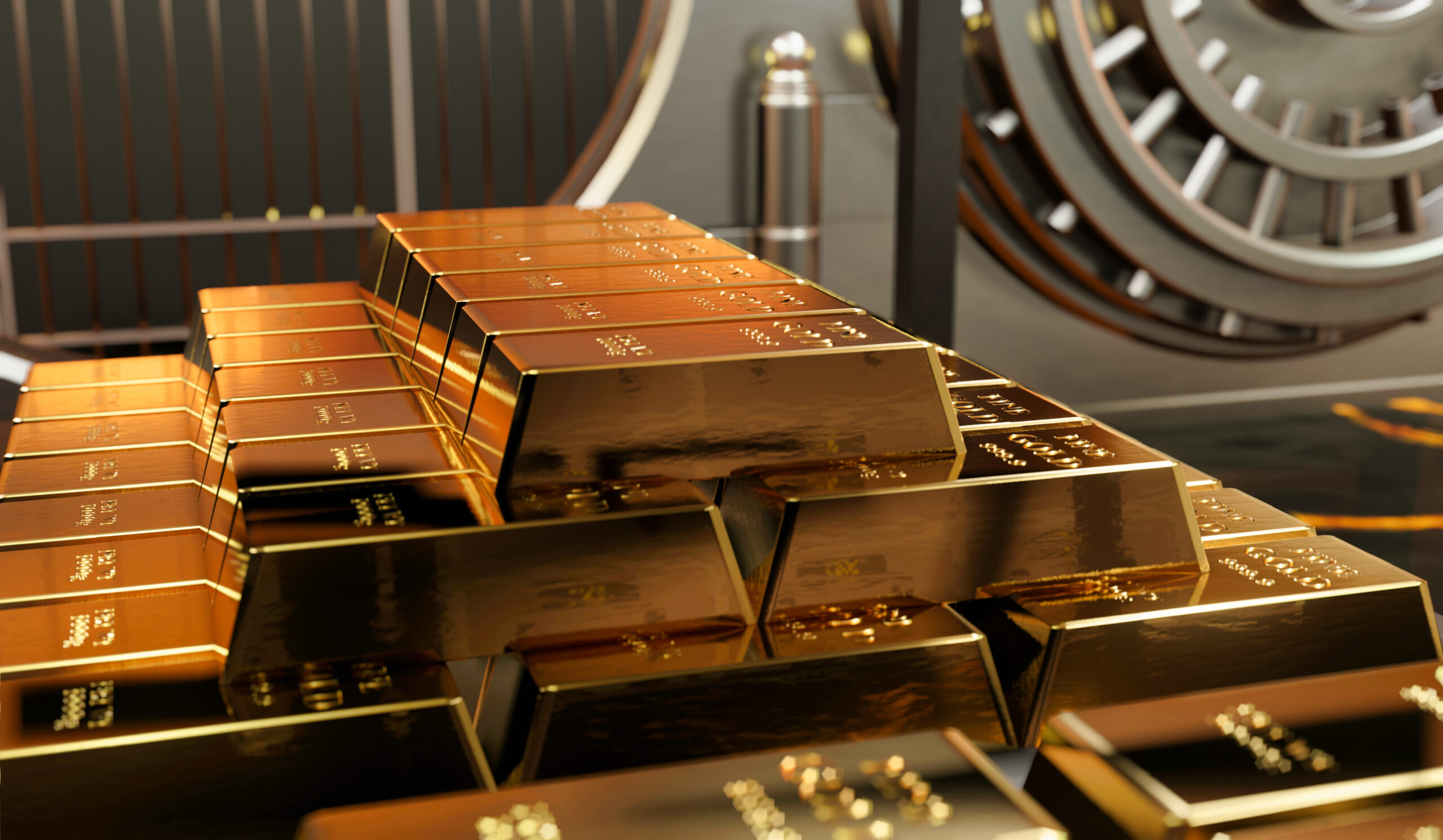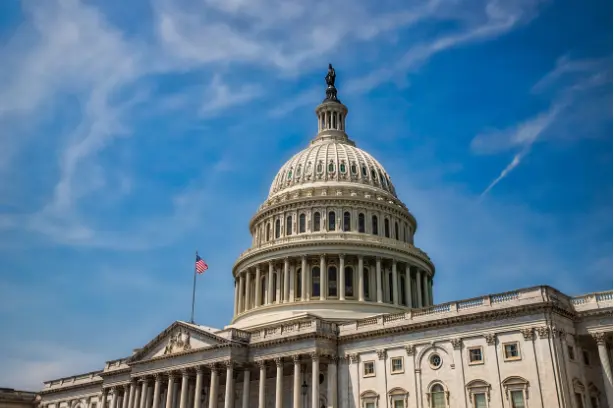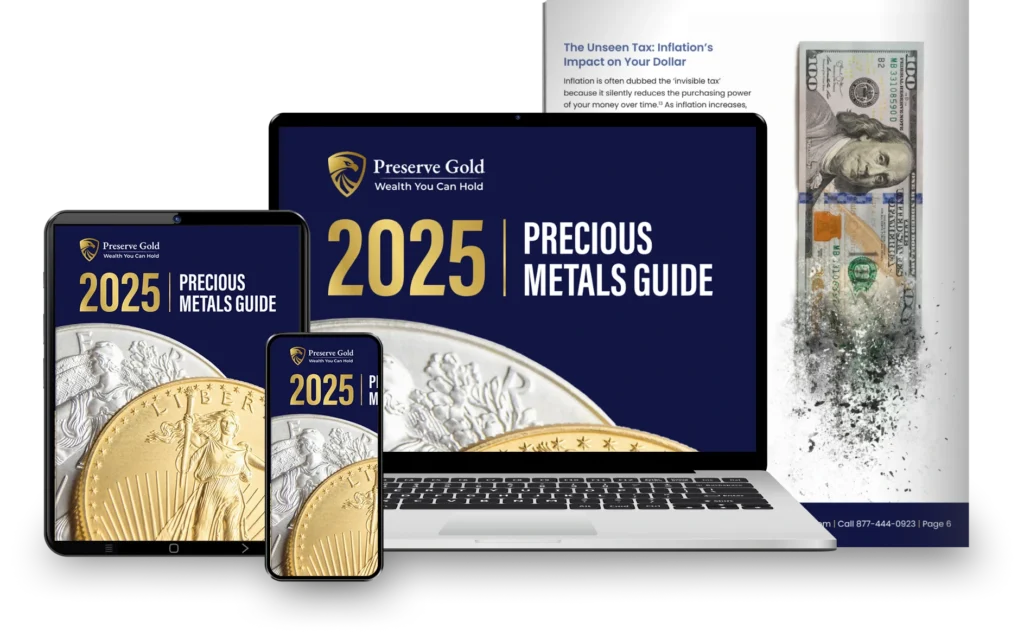By Preserve Gold Research
The luster of gold has captivated societies for centuries, not just as a cherished metal but also as a hedge against economic uncertainty. The yellow metal’s recent surge to a record high of $2,195 per ounce poses a critical question—can this rally be sustained? And what factors could influence its future price movements? The answer to these questions lies in understanding the fundamental drivers of gold’s value and its role in the global economy.
Like any other commodity, the price of gold is determined by market dynamics—the forces of supply and demand. However, unlike traditional commodities, gold has a unique allure that goes beyond its industrial and practical uses. Considered by some as the ultimate safe-haven asset, its demand is largely driven by investor sentiment. Macroeconomic factors like inflation, currency fluctuations, and geopolitical tensions all play a role in shaping this sentiment—and analysts have taken note.
Geopolitical factors and gold’s rally
Geopolitics has long been a key determinant in gold prices. In times of heightened global tensions, individuals often seek refuge in gold, driving up demand and consequently prices. Recent years have seen a resurgence of geopolitical tensions, with ongoing trade disputes and political instability in many regions of the world. The uncertainty surrounding these events has led to a flight to safety, with gold being the preferred choice for many.
This exact scenario unfolded in the first quarter of 2022 when the outbreak of hostilities between Russia and Ukraine contributed to a 6% increase in the price of gold. A similar trend was observed following the onset of hostilities between Hamas and Israel in the third quarter of 2023. On the eve of the Hamas offensive, gold stood at $1,834.60 per troy ounce. By October 27, twenty days post-attack, the valuation of this treasured commodity had climbed by 8.78%, reaching $1,995.80 per troy ounce.
With the geopolitical landscape expected to remain volatile in the near- to mid-term, some analysts believe that we could be entering a prolonged period of heightened risk. “Our latest social and political risk index highlights that social and political vulnerability is accelerating around the world, creating uncertainty and instability for our environment in equal measure,” noted Ruben NIZARD, Head of Political Risk at the financial services company Coface. “Our indicators have been announcing that we’re entering a new phase for these risks since the start of the decade,” he added.
Given the unpredictable nature of international relations and the potential for sudden escalations in conflict, analysts anticipate that the demand for gold will continue to be strong in the coming years. Should geopolitical tensions intensify—either through increased military actions or through non-military forms of aggression such as sanctions or tariffs—some experts predict that gold prices could soar to new heights.
Inflation concerns remain
Despite moderating from its 40-year highs seen in 2022, inflation continues to linger in the minds of investors and consumers alike. For the second consecutive month, the consumer price index (CPI) has exceeded forecasts, leading some to question whether the world is entering a new era of high inflation. While the Federal Reserve has maintained its optimistic outlook, some analysts believe that the CPI numbers raised in January and February 2024 may be a precursor to higher inflation in the future.
According to experts, several factors pose ongoing risks that could halt or reverse the year-over-year moderation in inflation. The recent spike in gas prices, largely attributed to drone strikes on Russian oil facilities, has sent prices at the pump soaring while raising concerns about knock-on effects on consumer prices. For the first time since late 2023, fuel prices are now higher than they were in the previous year, leaving many Americans feeling the pinch at the pump. With several OPEC+ countries extending production cuts through the second quarter of 2024, experts predict that gas prices will continue to rise in the weeks and months ahead, further fueling inflationary fears. “Gas prices are going to keep going up,” said Andy Lipow, president of Lipow Oil Associates. “This is going to cost the consumer more money.”
Inflation in the services sector also remains high, with a projection that if service prices keep rising while goods prices stay flat, the overall inflation rate could tick upwards. The supercore services measure, which excludes volatile energy and food prices, has trended higher in recent months, causing concern among some economists. This measure reveals a steady acceleration in the rate of inflation within the services sector, with a year-over-year increase stabilizing at 4.4% for both January and February, up from 3.9% in December.
Such sustained inflation in services could inadvertently push up the inflation of goods, as higher inflation expectations among consumers become normalized. And with the national debt ballooning to over $34.55 trillion, policymakers may be forced to print more money in order to service the interest on this mountain of debt. According to the nonpartisan Congressional Budget Office (CBO), this could further exacerbate inflationary pressures as the increased money supply dilutes the value of the dollar and leads to higher prices across all sectors.
Economic policy uncertainty
Amid a backdrop of sticky inflation and a spiraling national debt, 2024 could emerge as a watershed moment for the United States, with both the presidency, a third of the Senate, and the entire House of Representatives up for grabs. With both parties seeking to steer the economy toward their respective visions, analysts expect uncertainty over future economic policy to be a major factor influencing markets in the coming months.
The trend of gold prices spiking in January, particularly in U.S. election years, is seen as a reflection of this economic policy uncertainty. Individuals and institutions alike often turn to gold as a safe haven asset during times of market volatility, making it an indicator of investor sentiment. Historically, the change in leadership, whether in Congress or the White House, fosters a climate of uncertainty as markets attempt to price in the potential impact of new policies. Over the past two decades, this pattern has been remarkably consistent, with gold prices on average climbing nearly 5% in January and showing an upward trend approximately 80% of the time. According to some analysts, this trend could continue, especially if political rhetoric becomes more polarized and markets react accordingly.
But it’s not just the US facing economic policy uncertainty. More than 60 countries around the world will hold national elections this year, including major economies like India, Germany, and Brazil. With over half of the world’s GDP coming from these countries, the potential for policy shifts and geopolitical changes could add another layer of unpredictability to global markets. And with the market demand for gold typically increasing during times of uncertainty, analysts say the yellow metal could see further gains in the coming months.
Central bank buying spree continues
In recent years, central bank demand has been a driving force behind the buoyancy of gold markets, with a steady uptrend continuing into the last quarter of 2023. According to the World Gold Council, since 2010, central banks around the world have been net buyers of gold, accumulating over 7,800 tons of the precious metal. Over a quarter of these purchases have been made in the past two years alone, with central banks diversifying their reserves away from the “almighty” US dollar.
Collectively, central banks added 1,037 tons of gold to their holdings in 2023, the second-highest amount on record and just shy of the all-time high seen in 2022. The World Gold Council’s annual report also revealed a notable increase in overall gold consumption, which surged by approximately 3% to reach a total of 4,899 tons last year as well. This marked the highest level of demand recorded since 2010, largely driven by interest in the over-the-counter market and continued robust.
Analysts point to the macroeconomic environment as a key factor behind this surge in central bank gold buying. “The landscape is appropriate for emerging central banks to continue to be net buyers,” said Joseph Cavatoni, chief market strategist at the WGC.
In a shifting global financial landscape that sees the dominance of the U.S. dollar being increasingly questioned, central banks around the world are seeking stability through diversification. Over the past few years, a growing number of central banks have been quietly increasing their gold reserves while decreasing their U.S. dollar holdings. China and Russia, in particular, have been leading the charge with their gold purchases as a way to mitigate damages from trade wars and sanctions imposed on them by the U.S. government. “Foreign central banks aren’t just buying gold to hedge against political risk,” explained renowned economist Peter Schiff. “They’re trying to get out in front of a major decline in the dollar’s value and a potential sovereign debt crisis.”
The shift away from a dollar-centric reserve system has only been accelerated by recent actions by the U.S. government, particularly in regard to trade policy and sanctions. These actions, along with increased geopolitical tensions and economic uncertainties, have put the spotlight on gold as a safe-haven asset and an important diversification tool for central banks.
Analysts forecasting a record year
As central banks continue to increase their gold reserves and the threat of inflation looms large, analysts are forecasting a record year for gold prices. In a statement from JP Morgan, the financial giant predicts a continuation of the uptrend in gold prices, stating that “we believe that $2,500 is a possibility.” Highlighting a unique optimism in the commodities sector, the bank emphasized gold and silver as its top picks for the second year running. “Across commodities, for the second consecutive year, the only structural bullish call we hold is for gold and silver,” said Natasha Kaneva, Head of Global Commodities Strategy at JP Morgan.
But JP Morgan isn’t the only one with a positive outlook on gold. In light of the Federal Reserve’s deliberations on interest rate adjustments, Goldman Sachs has adjusted its gold forecast, now projecting a material rise to $2,300. This revision from Goldman Sachs marks the firm’s third upward adjustment just this year, reflecting growing confidence in gold’s market performance. Initially, Goldman Sachs had predicted gold to close the year at $2,090, later adjusting it to $2,180. However, given the metal’s strong performance exceeding these estimates, expectations were revised upward.
Citi analysts, too, have joined the chorus of optimistic voices, stating that gold prices could reach $3000 per ounce this year. Aakash Doshi, Citi’s North America head of commodities research, provided insights in a recent interview, indicating that this price hike could be triggered by an increase in central banks’ gold purchases, stagflation, or a recession. Doshi also highlighted the “de-dollarization” across emerging markets’ central banks as a critical factor that might precipitate a crisis of confidence in the U.S. dollar. Should this happen, central bank gold purchases could double, further driving up demand and prices for the precious metal.
With experts weighing in and historical tendencies suggesting a bullish trend, gold appears to be well-positioned for continued growth. As geopolitical and economic uncertainties continue to plague global markets, experts say the yellow metal’s historically safe-haven appeal will remain a key factor in driving demand and prices this year and beyond.







